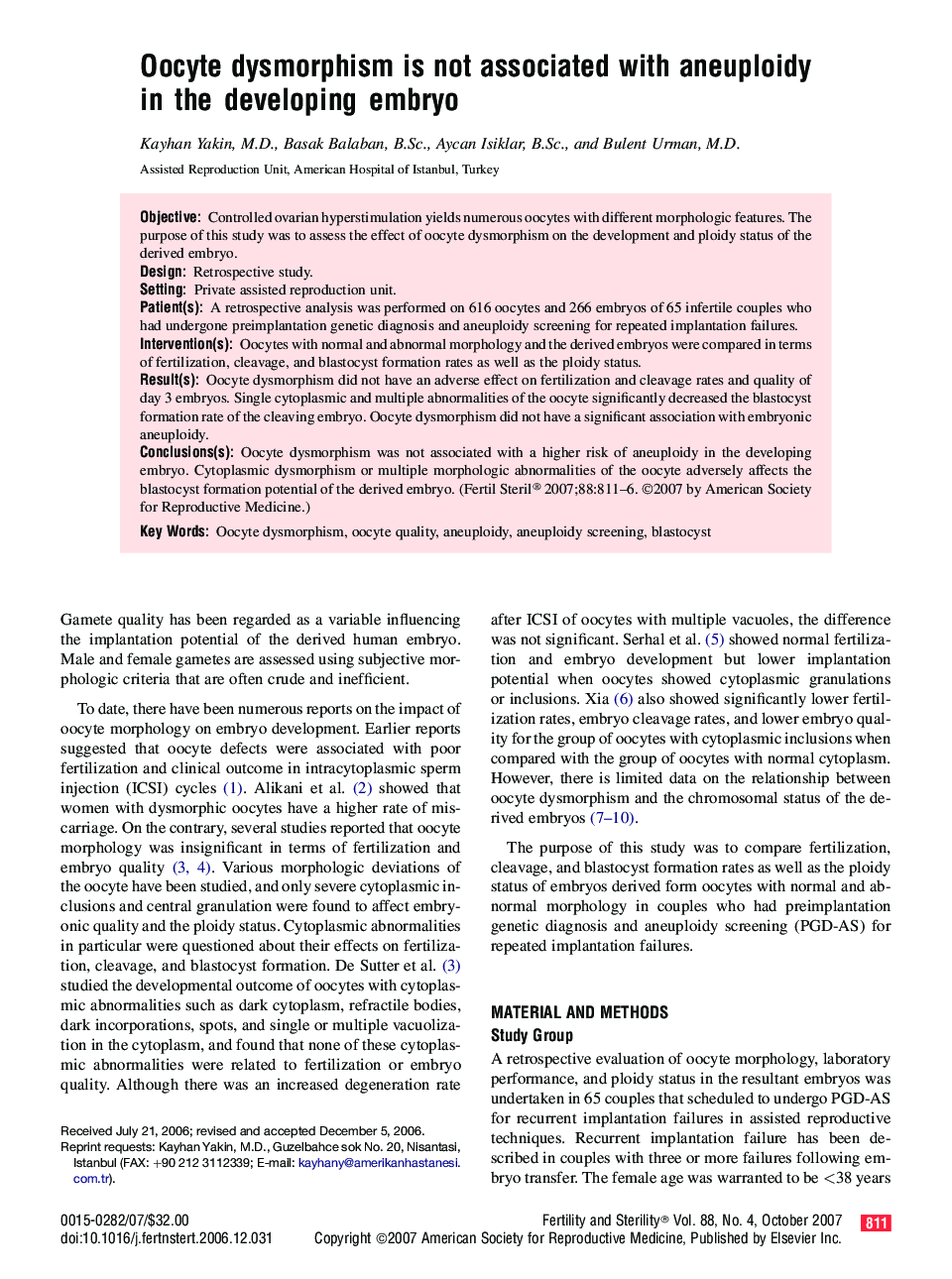| Article ID | Journal | Published Year | Pages | File Type |
|---|---|---|---|---|
| 3935407 | Fertility and Sterility | 2007 | 6 Pages |
ObjectiveControlled ovarian hyperstimulation yields numerous oocytes with different morphologic features. The purpose of this study was to assess the effect of oocyte dysmorphism on the development and ploidy status of the derived embryo.DesignRetrospective study.SettingPrivate assisted reproduction unit.Patient(s)A retrospective analysis was performed on 616 oocytes and 266 embryos of 65 infertile couples who had undergone preimplantation genetic diagnosis and aneuploidy screening for repeated implantation failures.Intervention(s)Oocytes with normal and abnormal morphology and the derived embryos were compared in terms of fertilization, cleavage, and blastocyst formation rates as well as the ploidy status.Result(s)Oocyte dysmorphism did not have an adverse effect on fertilization and cleavage rates and quality of day 3 embryos. Single cytoplasmic and multiple abnormalities of the oocyte significantly decreased the blastocyst formation rate of the cleaving embryo. Oocyte dysmorphism did not have a significant association with embryonic aneuploidy.Conclusions(s)Oocyte dysmorphism was not associated with a higher risk of aneuploidy in the developing embryo. Cytoplasmic dysmorphism or multiple morphologic abnormalities of the oocyte adversely affects the blastocyst formation potential of the derived embryo.
